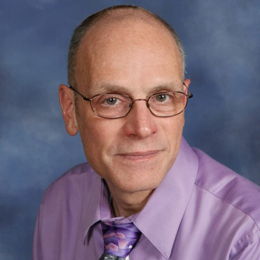It has always seemed a little strange to me that the Jewish months start on the new moon. If you are going to look up into the sky for seasonal markers, the full moon would be a much clearer and more dramatic signpost. The new moon is rather obscure, whereas a full moon lights up the sky and, at night, cast light over the darkness.
But the new moon as indicator of the new month is baked into our tradition. The Hebrew word for new, CHaDáSH, shares a root with the word for month, CHóDeSH. It is true that the pilgrimage festivals of Sukkot and Passover — as well as some minor festivals — begin on the full moon. But the cycle always begins at the new moon.
I admit that the lunar cycle particularly captures my attention at this time of year. More compelling than a calendar, looking up at the moon when I’m driving home from Temple at night reminds me of our proximity to the High Holy Days. The Temple-employee part of me watches with nervousness, thinking about all the work that needs to be done so that the holiday season may be both profound and joyous for our community. But the Jewish individual in me looks up with a sense of great hope.
As a cantor, I know that in thinking about our High Holy Day liturgy, many congregants’ minds go first to Kol nidrei or Avinu malkeinu. These are powerful moments both musically and textually. I have mixed feelings about them. On the one hand, I appreciate gravity of the sentiments they convey. And because of their significance to most worshippers, I feel great responsibility to execute them well. But they are not the powerful moments for me.
For me, the most profound moments come at the beginning and at the end. The first is on Erev Rosh Hashanah — with the chanting of Bar’chu, the call to worship. It’s quiet rendering of the special melody for High Holy Days proclaims the start of the new year — that specific moment when the joys and challenges of the year gone by now become the past, and all of the possibilities for the year ahead are laid before us. What things will happen to us? And more importantly, what will we make of them?
The second moment comes at the very, very end. At the conclusion of Yom Kippur, after all the prayers have been said, after our personal confessions have been made, after the last blast of the shofar has been sounded, after the last housekeeping items of the holiday have been announced, we sing Bashanah Haba’ah: “wait and see, wait and see how much good there will be bashanah haba’ah — in the coming year.” It is a song of hope and of commitment to go forward into the new year with strength, courage, humility, and resolve.
This Shabbat is the beginning of the month of Elul. The last sliver of the moon will disappear and the month of preparation for the High Holy Days will begin. We will turn our thoughts to the task of the Days of Awe — to examine ourselves honestly and to gather as a community to prepare a better path for the year ahead. The new moon after that will be Rosh Hashanah. And as that moon expands beginning with its tiny arc, as the light of the night sky glows brighter, so too all the possibilities of the year ahead will emerge and begin to blossom before our eyes. Perhaps it makes sense that the new season starts with the faintest of light so that its brightness increases along with our hopes for the coming year. May this new year be a good year for us all, a year with fresh possibilities for ourselves, our community, and for our world.




